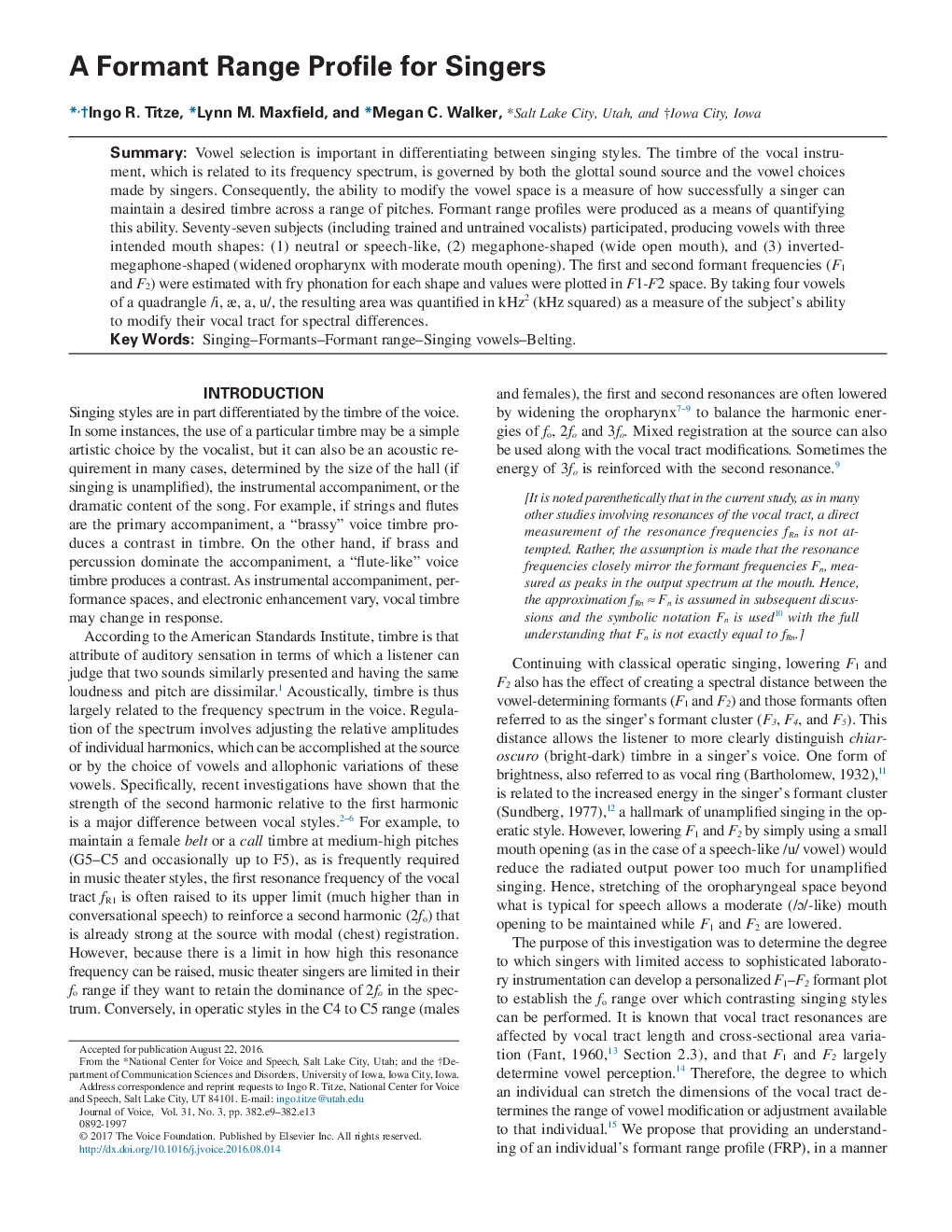| Article ID | Journal | Published Year | Pages | File Type |
|---|---|---|---|---|
| 5124256 | Journal of Voice | 2017 | 5 Pages |
SummaryVowel selection is important in differentiating between singing styles. The timbre of the vocal instrument, which is related to its frequency spectrum, is governed by both the glottal sound source and the vowel choices made by singers. Consequently, the ability to modify the vowel space is a measure of how successfully a singer can maintain a desired timbre across a range of pitches. Formant range profiles were produced as a means of quantifying this ability. Seventy-seven subjects (including trained and untrained vocalists) participated, producing vowels with three intended mouth shapes: (1) neutral or speech-like, (2) megaphone-shaped (wide open mouth), and (3) inverted-megaphone-shaped (widened oropharynx with moderate mouth opening). The first and second formant frequencies (F1 and F2) were estimated with fry phonation for each shape and values were plotted in F1-F2 space. By taking four vowels of a quadrangle /i, æ, a, u/, the resulting area was quantified in kHz2 (kHz squared) as a measure of the subject's ability to modify their vocal tract for spectral differences.
